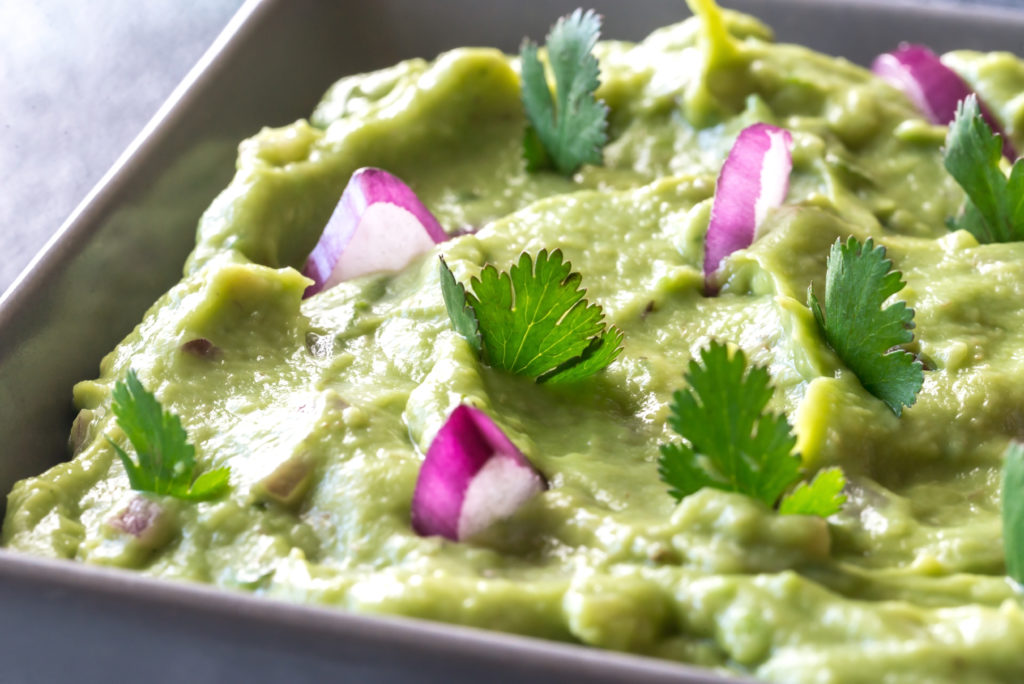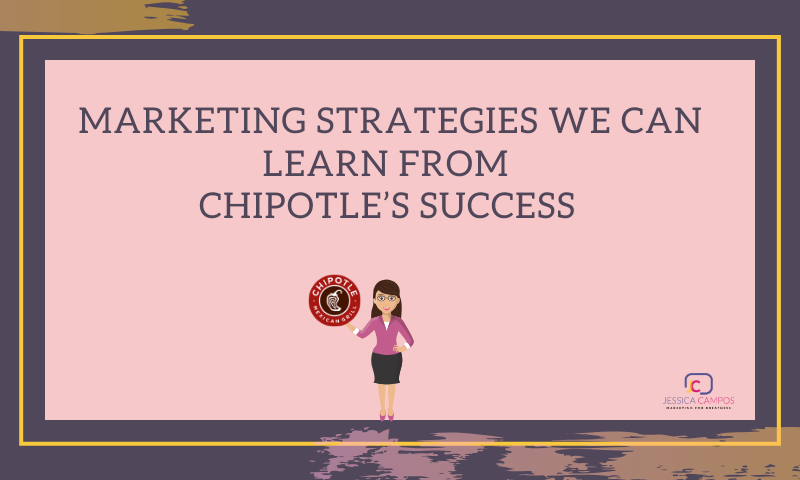Are you looking for innovative ideas to refresh your marketing plan? What can be a better place than studying lessons from Chipotle’s comeback?
Chipotle is making big news after a series of food quality and safety issues. Named a marketing maven by Inc Magazine, due to its centralized, digital-first campaigns, gives us marketers a great case to study and learn.
For those marketers and small business owners who are preparing for their best year ever, get ready to add some avocado and carne asada to your marketing plan this upcoming season!
Let’s dip in!

Digital Experience Should Be Your Number 1 Priority
Part of the main ingredients of Chipotle’s comeback has been its commitment to go all digital. The company wanted to give its customers a sleek, modern, food-forward experience. Their app has a proprietary “smarter pickup time” technology that enhances the food experience even more.
To make sure they fulfill their commitment with great user experience, Chipotle conducts ongoing research into how customers interact with the company. They iterate, test, and learn.
User experience should be the number one priority in your marketing strategy. 88% of online shoppers say they wouldn’t return to a website after having a bad user experience.
Chipotle has been playing a very smart move by shifting from the traditional bo-go and coupons that casual food restaurants use to drive traffic, to take the time and design a digital experience for their users.
Narrow Your Generation And Find Them Where They Are (TikTok)
Chipotle has realized quickly the power of Millennials and Gen Z when their online orders impulsed by their app were happening from their younger consumers.
In order to conquer those generations, in particular, Gen Z, they have partnered up with TikTok for marketing campaigns like #GuacDance challenge and the #Boorito challenge.
They launched the #GuacDance challenge and customers submitted a total of 250,000 video submissions, resulting in Chipotle selling 802,000 sides of guacamole. Then, for Halloween, the company encouraged its customers to make a TikTok video in their costume glory using the hashtag #Boorito.
In order to spread the word, Chipotle partnered with several top TikTok stars, including Zach King (25.7 million followers) and Brittany Broski (1.6 million), who posted their own videos.
In case you didn’t know TikTok has surged in popularity, surpassing the likes of Facebook, Instagram, YouTube, and Snapchat in monthly App Store installs and Q4 2018 worldwide downloads. While the app doesn’t appear to differ much from other looping, short-form video-sharing apps, TikTok has enticed and captivated consumers with a proclivity for binge-watching video content. Brands are capitalizing on the app’s remarkable success to launch influencer marketing campaigns with top TikTok creators.
But Chipotle isn’t just targeting the younger generations. It seems like they segment their campaigns. They recently launched a brand awareness campaign on their new menu conforming to Keto diet, Paleo and Whole 30 diets.
A lesson learned here: marketers need to design their campaigns generation-specific. Not all audiences respond the same way, especially digitally.
Reversing Social Media Marketing With User Generated Content (UGC)
Chipotle’s massive digital success has been driven by their app downloads and their direct efforts to spread their campaigns strategically.
When you see their social media (Facebook and Instagram) you will notice a different approach from the typical “food porn” marketing.
Chipotle made a u-turn on the traditional social media platforms! No more #foodporn!
Perhaps you imagine the fancy videos showing fresh guac and pico, full or colorful veggies. Well, NO! That’s NOT what their Facebook and Instagram is about.
They have taken a totally different approach: authentic marketing first, aesthetics second.
Take a look at their accounts and you will notice how raw, real, and authentic their content is. We predict that this is a trend that will grow even more in 2020.
Users are tired of seeing perfectly curated feeds and Chipotle knows it!
Why user-generated content (SGC) really matters?
UGC is digital word of mouth. 92% of consumers trust word of mouth more than any kind of advertising. 84 percent of millennials report that user-generated content has some influence on what they buy. These are big numbers that business owners can’t afford to miss.
People trust other people more than they’ll ever trust your marketing alone. Rather than hearing from a brand, they’re getting the genuine opinions of consumers just like them. By showcasing social proof, you’re instantly positioning your brand as more trustworthy.
If you truly want to generate revenue from your digital marketing efforts, your digital marketing strategy needs to prioritize user-generated content, especially Facebook, Instagram, and Youtube.
Chipotle has concentrated its production efforts to enhance its employees’ benefits program and customer loyalty program. The rest of their social media marketing is USG. It’s so simple!

Centralized Content Marketing Program
Successful businesses are taking the function of enterprise content seriously. They are moving beyond the one or two ad hoc practitioners supporting the whole business – to specialized teams focused on strategic content in marketing and communications.
A centralized content marketing program connects sales and marketing. Topics flow from sales to marketing and content flows from marketing to sales. There’s no need to follow guerilla tactics when you define a clear roadmap to generating content that users want to consume.
Sixty-seven percent of B2B organizations are fully committed to the practice of content marketing, and half these organizations expect budgets to increase over the next year. In B2C, it’s a similar story. Fifty-seven percent are looking at increased budgets, and 64% say their organization is fully committed.
Chipotle’s CMO Chris Brandt spoke at Advertising Week about ignoring conventional turnaround wisdom to achieve a $1.2 billion revenue increase in three months.
Without a doubt, a centralized content marketing program saved the brand.
In February, Chipotle worked with documentarian Errol Morris to capture workers’ routines and why those employees remained loyal to the brand despite low points, with footage clipped into TV and digital spots. Employee-driven marketing eventually grew into new experiments on social channels. A video of an employee doing a lid flip trick with one of Chipotle’s bowls was shared to the brand’s official Instagram page, racking up 1 million views.
What’s the lesson that all brands need to learn? Content is not just about features and benefits.
Boost Your Organic Traffic With Content SEO
Organic traffic is traffic that comes to your website when someone types a query into Google and clicks on your organic listing in the search results. Anytime lands on your website from the search engine results pages (aka SERPs), you’re receiving organic search traffic.
Take a look at the website traffic that Chipotle’s website has- ORGANIC. A shy 4.8M searches per month – organic. We see very little paid search (AdWords).
Organic search traffic brings in highly qualified prospects and it’s because of their search intent. When you produce content that fits the search intent of the users, your website visitors are almost like leads!
Search Engine Optimization (SEO) has been in the digital marketing space for a long time now. Some marketers believe (wrongly) that SEO is dead. 93% of online experiences begin with a search engine. How can SEO be dead?
Leads from search engines have a 14.6% close rate, while outbound leads (ex. cold-calling, direct mail, etc.) have a 1.7% close rate.
Can SEO drive traffic to a restaurant? You bet!
One of the very first campaigns that hit the search engines was “Behind the Foil,” the most intimate look into the company’s operations in its history.
The documentary-style digital and TV spots, shot by documentarian Errol Morris, aimed to “pull back the foil” by featuring behind-the-scenes footage of Chipotle restaurants, including its kitchens, equipment and prep routines, and featuring Chipotle employees and the farming partners that grow the brand’s real ingredients. This spot is titled “The Guac Smasher.”
Content SEO is a key part of any SEO strategy. Without content, it’s impossible for your site to rank in search engines. It’s, therefore, crucial to write and structure quality content!

Takeaways From Chipotle’s Digital Marketing
- Brand loyalty can be achieved without marketing your products and benefits. The new approach? Marketing that recognized the core values of the company.
- Social media marketing needs to make a U-turn and features authentic content. Brands need a centralized plan to execute content distribution.
- Your targeted generation is crucial to define what marketing campaign to launch and how will it look.










